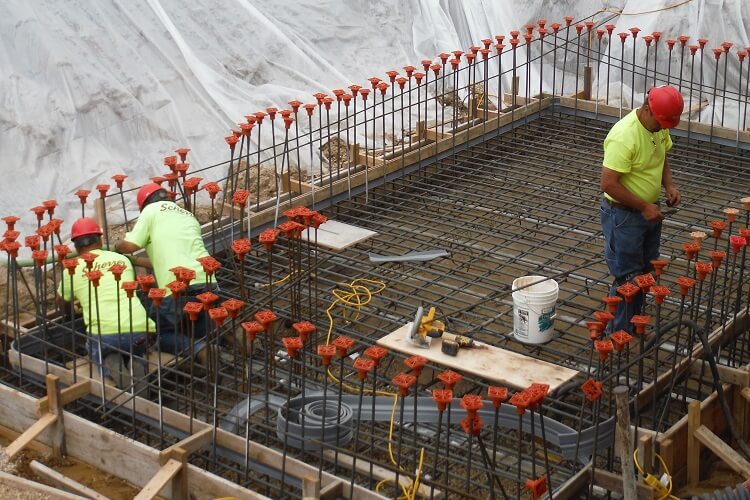Reinforced Concrete or RC, is used in construction for its strength, durability, and versatility. Here are some reasons why we need reinforced concrete:
Strength: Reinforced concrete has high compressive strength and can resist heavy loads and forces. It can be used in the construction of high-rise buildings, bridges, dams, and other structures that require high strength.
Durability: Reinforced concrete is highly durable and can withstand extreme weather conditions, such as heavy rain, wind, and earthquakes. It is also resistant to fire and corrosion, making it a long-lasting construction material.
Versatility: Reinforced concrete can be moulded into various shapes and sizes to fit the needs of different construction projects. It can be used for walls, floors, beams, columns, and other structural elements.
Cost-effective: Reinforced concrete is a cost-effective material compared to other construction materials, such as steel or wood. It is also easy to manufacture, transport, and install and easy to estimate with Billing of Quantities (BOQ) making it a popular choice for large construction projects.
Sustainable: Reinforced concrete is a sustainable construction material that can be recycled and reused. It also has a low carbon footprint, making it an eco-friendly choice for building construction.
Why do we need Steel in reinforced concrete
To provide tensile strength: Concrete is strong in compression, but weak in tension. The addition of steel reinforcement bars, also known as rebars, provides the necessary tensile strength to the structure.
To control cracking: Concrete shrinks as it dries, and this can cause it to crack. The presence of steel reinforcement helps to control cracking by holding the concrete together and distributing the stresses more evenly.
To improve durability: Steel reinforcement in concrete helps to improve the durability of the structure by preventing corrosion and resisting the effects of weathering.
To increase structural strength: When provided with proper detailing and lap length, the addition of steel reinforcement can significantly increase the structural strength of the concrete, allowing it to support heavier loads and withstand greater forces.
Overall, steel reinforcement is a critical component of reinforced concrete, providing the necessary strength, durability, and structural integrity to ensure that the concrete structure can perform as intended over its lifetime.
Reinforcement is an essential component in concrete construction. It helps to increase the strength, durability, and structural integrity of the concrete. When selecting reinforcement for concrete, there are several important aspects to consider.
The first aspect is the type of reinforcement. There are two primary types of reinforcement used in concrete construction: steel and fiber. Steel reinforcement, also known as rebar, is made of high-strength steel and is typically used in larger-scale construction projects. Fiber reinforcement, on the other hand, is made of synthetic fibers and is often used in smaller, residential construction projects.
The second aspect to consider is the size and shape of the reinforcement. The size and shape of the reinforcement will depend on the specific needs of the project. For example, in a high-rise building, larger and thicker rebar may be required to provide the necessary strength to support the weight of the structure. In a residential home, smaller and thinner fiber reinforcement may be sufficient.
The third aspect to consider is the spacing and placement of the reinforcement. The spacing and placement of the reinforcement will depend on the design of the structure and the load it will be supporting. The reinforcement should be placed in a way that evenly distributes the load and provides the necessary support.
The fourth aspect to consider is the quality of the reinforcement. The quality of the reinforcement will impact the strength and durability of the concrete. It is important to choose high-quality reinforcement that meets industry standards and has been tested for strength and durability.
The fifth aspect to consider is the cost of the reinforcement. The cost of the reinforcement will vary depending on the type, size, and quality of the reinforcement. It is important to consider the cost of the reinforcement in relation to the overall cost of the project and to choose reinforcement that provides the necessary strength and durability at a reasonable cost.
In conclusion, selecting reinforcement for concrete requires careful consideration of the type, size and shape, spacing and placement, quality, and cost of the reinforcement. By taking these important aspects into account, you can ensure that the reinforcement provides the necessary strength and durability to support the structure and ensure its longevity.
